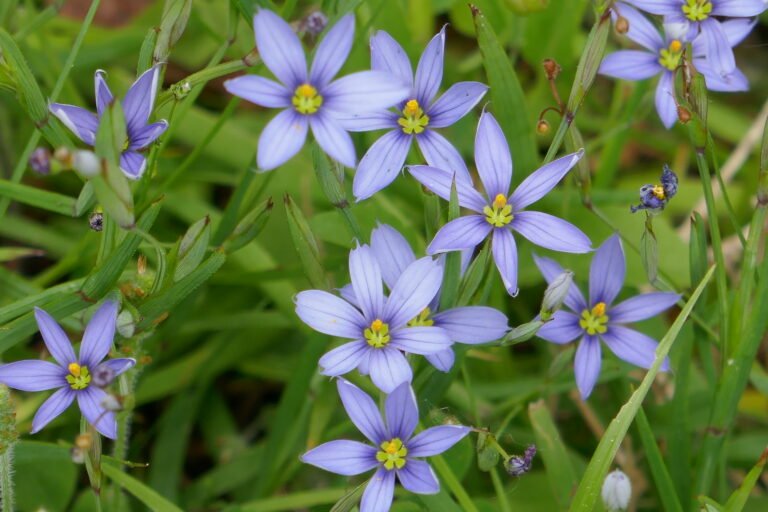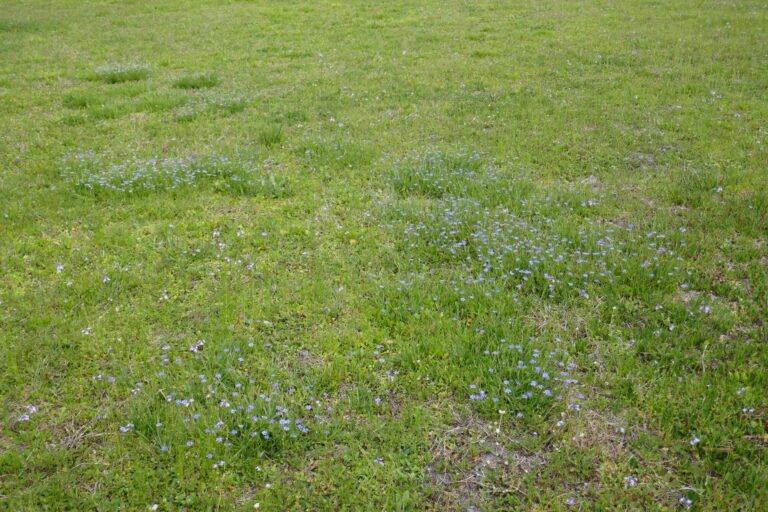
Sisyrinchium angustifolium
(Narrowleaf Blue-eyed Grass)

Common Names, Latin Name, and Family
Some of its common names are narrow leaf blue-eyed grass and Bermuda blue-eyed grass.
Its Latin name is Sisyrinchium angustifolium.
It is found in the Iridaceae, or iris, family.
Form
A perennial wildflower that grows to about a foot in height. It forms small clumps and looks like grass when not in bloom.

Leaves
The leaves are narrow grasslike with entire margins. They are narrow and no wider than 4mm.

Flowers
The brilliant blue flowers are star shaped and appear in the spring and summer.

Habitat
It occurs naturally in moist forests, wet fields and pastures, and along stream banks.
Native Range
It is native to the following states: AL, AR, CT, DC, DE, FL, GA, IA, IL, IN, KS, KY, LA, MA, MD, ME, MI, MN, MO, MS, NC, NH, NJ, NY, OH, OK, PA, RI, SC, TN, TX, VA, VT, WI, and WV.
Landscape Use
In the home landscape it needs a relatively moist area without lawn grass to compete with, but can be grown in areas where the lawn in sparse.
Wildlife Uses
The flowers are a nectar source for butterflies and bees and the small seeds are eaten by songbirds
Propagation
It can be grown from seed and transplanted.